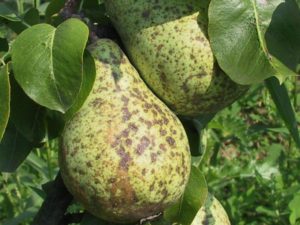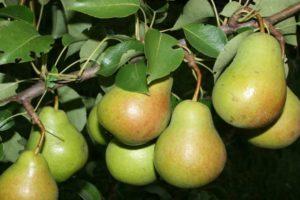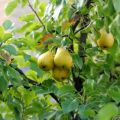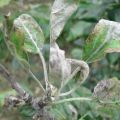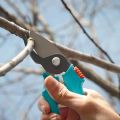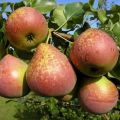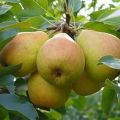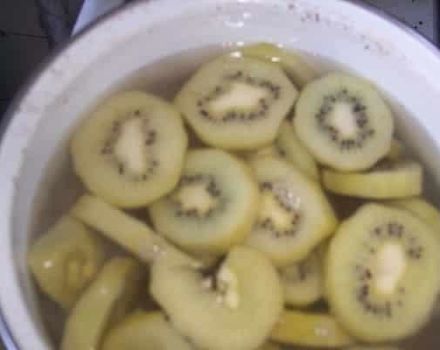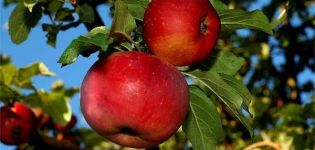Description and characteristics of pears of the Lyubimitsa Klappa variety, planting, growing and care
This crop is grown in orchards along with apples and other fruit trees. Pears Klapp's favorite have been familiar to summer residents for over 150 years. During this time, the variety has become widespread and has not lost its popularity. With proper care, the summer resident receives a stable annual harvest.
Description and full characteristics of pears Favorite Klapp
For the successful cultivation of trees on the site, it is recommended to study the description of the variety. Taking into account the information received will help prevent mistakes when landing and taking care of.
Fruit
Unripe pears are green in color, as they ripen they turn yellow, a blush appears on the sides. The taste is typical for the culture, sweet and sour. The average weight of one fruit is 100-250 g. Pears become smaller over the years.
The tree bears fruit up to 50-70 years, depending on the conditions and care of the pear.
Crown
In the first years, a young tree forms a pyramidal crown. As they mature, after the beginning of fruiting, the crown becomes round and wide. The summer resident forms the crown of the tree independently. He has the right to limit the height of the seedling and determine the optimal number of branches.
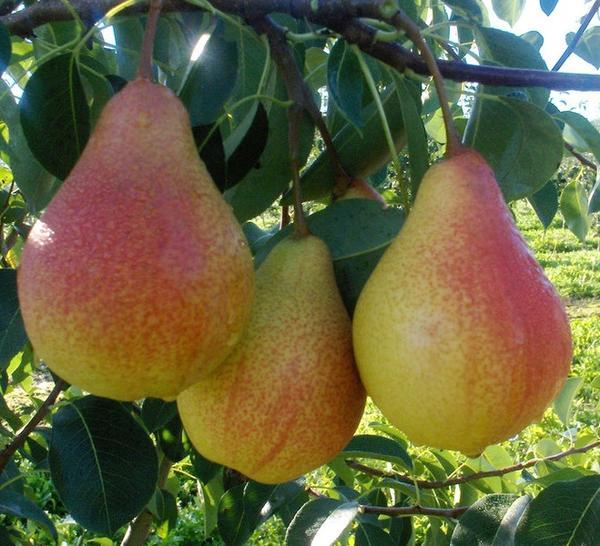
Flowering and fruiting
One inflorescence consists of 6-7 flowers. Flowering time depends on the growing region, late May or early June. When the threat of return frost has passed. Fruiting occurs in the 7-8th year after planting the seedling.
Subject to the rules and regulations of planting, trees bear fruit consistently and abundantly.
Pros and cons of the variety
Clapp's favorite has positive and negative properties. Every summer resident can appreciate them. It is necessary to grow a tree on the site, and then the assessment will be more realistic.
Pros:
- high and stable yield;
- unpretentiousness and undemanding care;
- versatility of fruit use;
- resistance to low temperatures, withstands frosts down to -30 ⁰С;
- drought resistance;
- the ability to endure transportation and maintain a presentation.
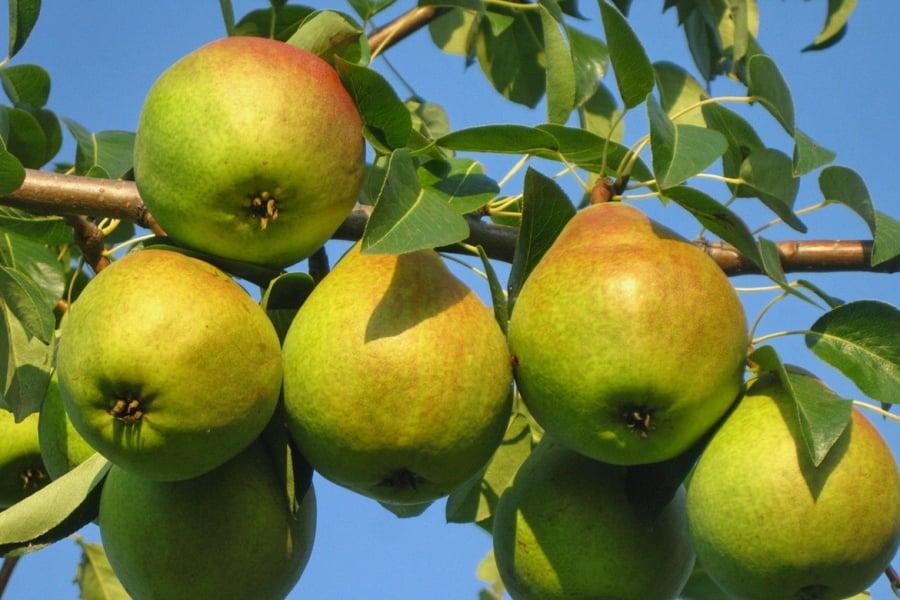
Minuses:
- tendency to shedding fruits when overripe;
- susceptibility to copperhead and scab;
- short shelf life of fruits;
- requires the planting of pollinating varieties.
The summer resident assesses the advantages and disadvantages of a tree on his own after he grows it on the site. Searching for reviews and comments helps make the final choice.
How to plant a tree
After the summer resident chooses the variety, the pear should be properly planted. This is half the battle. Even beginners will not have difficulties in landing. It is recommended to follow simple requirements and techniques, and the tree will delight the harvest.
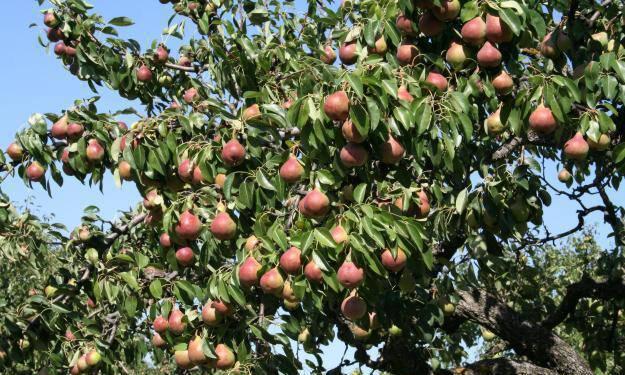
Landing dates
It is preferable to plant the tree in the spring, before the sap flow begins. Then the seedling is easier to transplant and is accepted faster. Another plus of spring planting is that the tree will have more time to prepare for winter.
Depending on the climate of the growing region, fruit trees are planted until mid-April.
If the summer resident decided to plant a seedling in the fall, then you need to calculate the period so that the tree has 1-1.5 months in stock before the first frost.
Seat selection
In order for the pear to take hold and bear fruit, it is recommended to choose the right place. Choose a sunny area, protected from drafts and strong winds.
As for the soil, Klapp's darling is not picky. But if you pick up fertile soil, the tree will grow faster and begin to bear fruit earlier.Much attention is paid to the occurrence of groundwater. The preferred depth is 3-4 m.
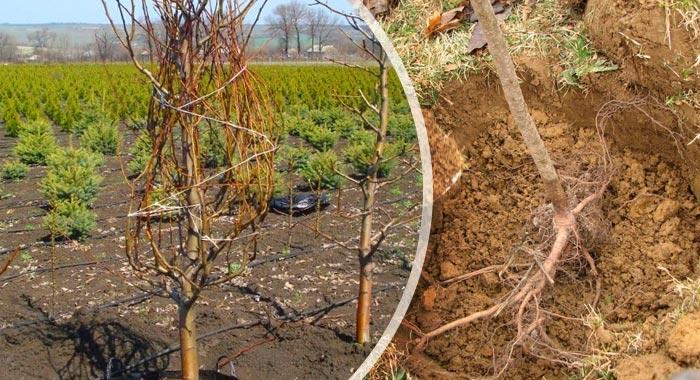
Selection of seedlings and preparation of holes
The selection of a seedling is given as much attention as the preparation of the planting site or other tree growing procedures on the site.
Planting material should be:
- outwardly healthy;
- no defects on roots and stems;
- 1-2 years old;
- preferred stem thickness 1 cm.
The holes are dug in advance, the depth is 60 cm, the width is 1 m. If the planting of a tree is planned for the fall, they do it a month in advance, if in the spring, then they dig holes in the fall.
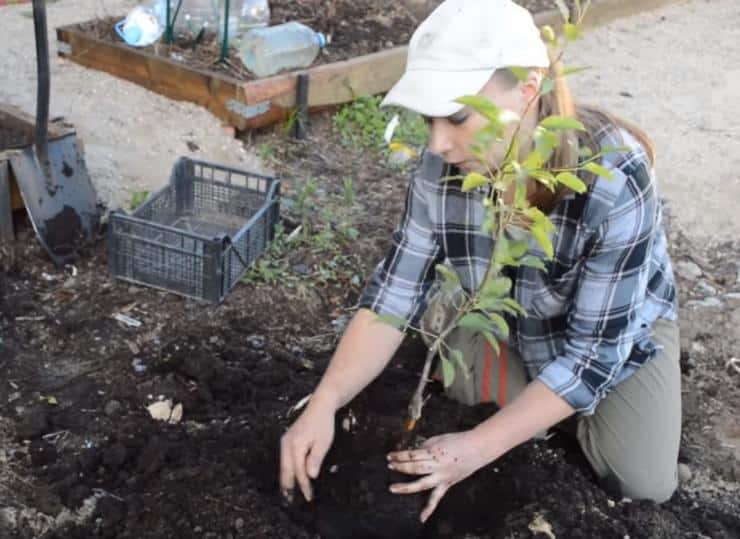
A stake is driven in the center, which will serve as a support for the young plant. A drainage layer is formed at the bottom of the pit. Then it is filled with fertile soil, for this purpose compost, humus, peat, river sand and wood ash are added to the sod layer of the earth.
Recommendations for planting seedlings
A mound is formed in the planting pit, a seedling is placed on it and the roots are distributed. Then sprinkle with earth, periodically lifting and shaking the tree. The earth is tamped and watered. At the end of planting, the seedling is tied to a peg. When planting, make sure that the root collar of the tree is above the ground. Then the pear will grow and develop correctly.
Plant care rules
In order to get a pear harvest in the future, they carry out competent tree care. Compliance with all the norms and requirements of agricultural technology is required from the summer resident. This includes timely watering, fertilizing, loosening and mulching.
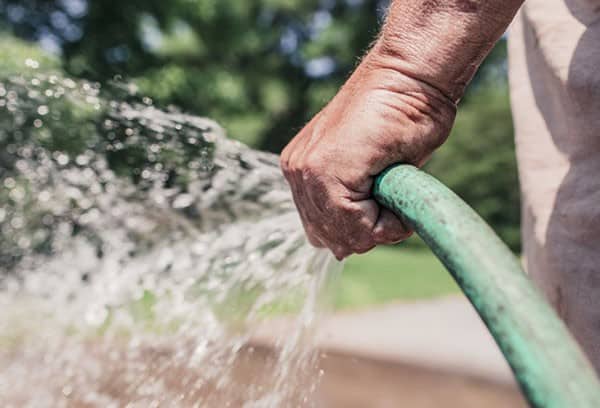
Top dressing
At first, there is no need to apply fertilizers, since the necessary elements are introduced during planting. A young tree feeds for 2-3 years. Fertilizing in different ways.
If the period is rainy, then fertilizers are injected, if the weather is stable, they are watered with diluted solutions.
Organic fertilizers are applied once every 3 years, in spring or late autumn. Manure, peat, humus are used as fertilizers. The last 2 components are used for mulching. Mineral fertilizers alternate with each other, limiting the amount of nitrogen in the fall.
Organization of watering
When landing, a groove is formed around the trunk circle. It is used for watering, liquid fertilizing. A young tree is often watered. Plants need moisture to grow. As they grow older, watering becomes less frequent, but more abundant. It is necessary that the soil is soaked 8 cm deep.
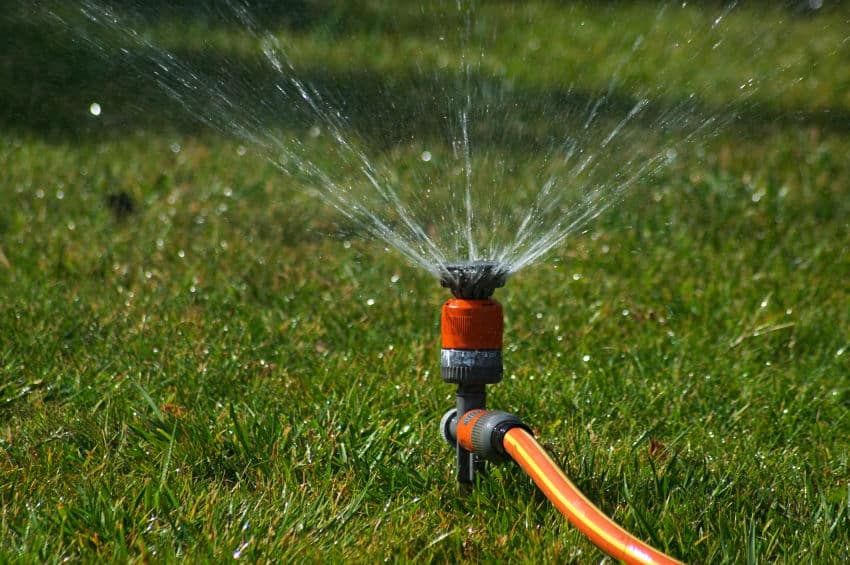
In order for moisture to remain in the ground longer, the trunk circle is loosened. This procedure saves weeds and provides oxygen to the pear root system.
Crown formation
Pruning is carried out in early spring, before sap flow begins and buds bloom. The shoots of Petite Klapp are fragile, so she needs the correct formation of skeletal branches:
- The first year the seedling is cut, leaving 60 cm from the ground. This will start to form side branches of the tree.
- Second year. Leave 5 branches in three tiers. Bottom 3 branches, second 2 and last 1.
The cuts are done neatly, do not leave hemp and do not go too deep.
- The third year and all subsequent ones shorten the skeletal branches by 1/3. At the same time, cutting off all the side branches that thicken the crown and grow inward.
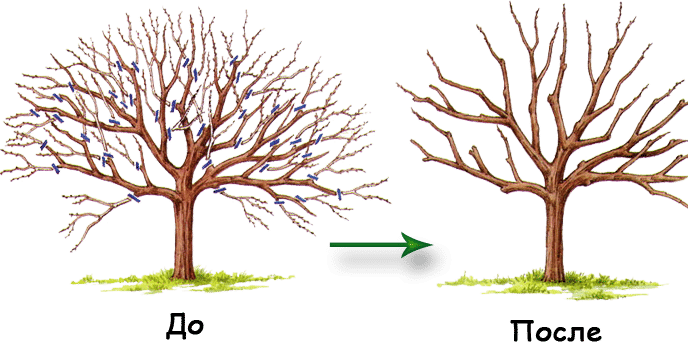
Sanitary pruning is ongoing. All diseased, deformed and dried branches are removed.
Preparing for winter
The winter period is characterized by stressful situations for the tree. It is important to properly prepare the pear. Then the plant will survive the cold, and in the spring it will grow and bear fruit with renewed vigor. The trunk circle is cleared of weeds, all vegetation is removed. The trunk is cleaned of moss, old bark and whitewashed with lime with the addition of clay and copper sulfate. The trunk circle for the winter is mulched with peat, plant residues or humus with a layer of 15 cm.
Disease and pest control
An important role is played by the treatment of plants from insects and diseases. A healthy plant produces a rich harvest.

Diseases characteristic of pear
The culture is susceptible to various diseases, which are constantly being combated. Summer residents attach great importance to proper planting and prevention. It is easier to prevent a disease than to cure it later.
Scab
Symptoms of the disease appear in conditions of high humidity. The inside of the leaf is covered with olive-brown spots. The same spots appear on fruits that can be deformed and delayed in development. When the first signs appear, it is recommended to treat the plants with fungicides. During the flowering period, they are sprayed with Bordeaux liquid.
For prevention purposes, it is recommended to remove foliage, burn plant residues. Dig up the trunk circle in the fall, pour it with 5% urea solution.
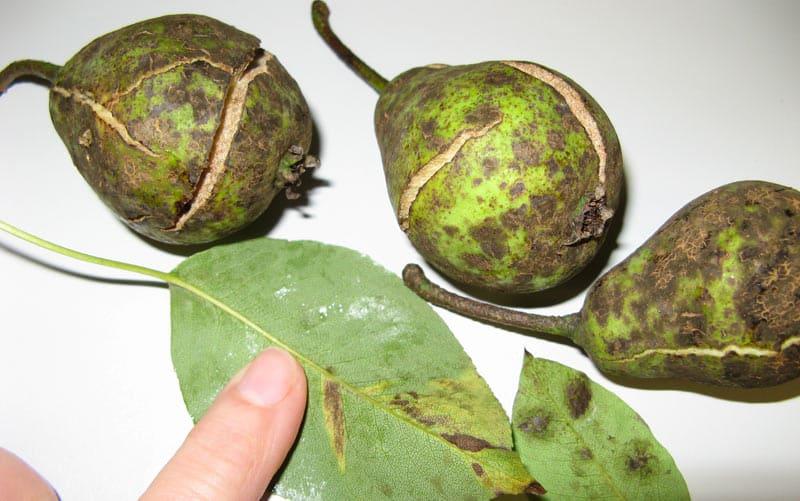
Moniliosis
Symptoms appear on flowers, they begin to fade, turn black. The pear is treated with preparations containing copper. Summer residents recommend to spray plants with "Fitosporin". In addition to the therapeutic effect, the drug increases the yield of the tree.
Rust
Symptoms of the disease are small yellowish spots on the leaves. By the end of summer, they turn orange, like rust. The affected areas are immediately cut and burned, and the tree is treated with fungicides.
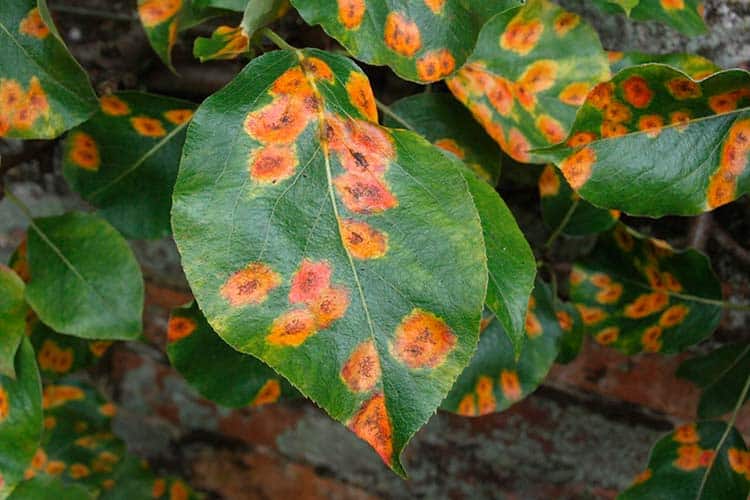
Pests threatening the variety
Insects do a lot of harm to the tree. The fight against them is carried out constantly, since they can destroy a significant part of the crop.
Pear Copper
Damage is caused to shoots, ovaries and buds. They are treated with "Commander" or folk remedies.
Aphid
A pest known to the gardener. A large accumulation of insects can destroy a significant part of the crop. Traps are set or treated with chemicals.
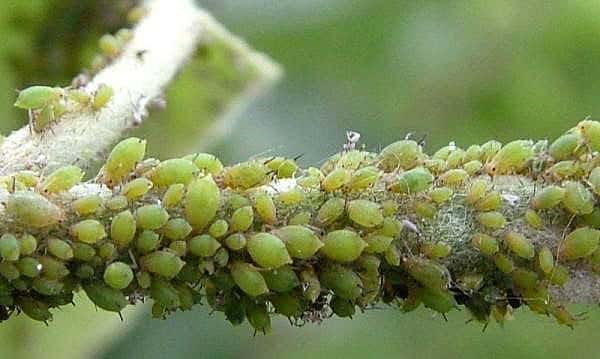
Pear sawfly
The insect lays the larvae, which eat the seeds of the fruit. Pears darken and fall off. Thus, the pest destroys the crop. Timely processing helps to destroy the sawfly.
How to collect fruits and where to store them
Pears Favorite Klapp are harvested a week before ripening. So they are better stored and do not rot. The shelf life of fruits is 2 weeks. Pears are kept in the refrigerator for up to 30 days. Klapp's favorite is unpretentious, in terms of characteristics it is not inferior to many modern varieties of pears.
